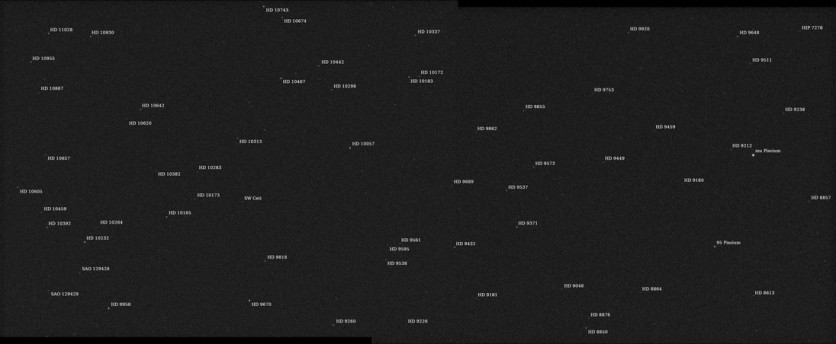NASA's Psyche spacecraft has reached another milestone after it captured its "first light" images following its successful departure on Earth on October 13.
Currently positioned 16 million miles away from Earth, the spacecraft is en route to the asteroid Psyche, located in the main asteroid belt between Mars and Jupiter, with an expected arrival in 2029.

NASA's Psyche Spacecraft Captures 'First Light' Images
The mission's achievement involves the activation of Psyche's twin cameras on December 4, marking the "first light" phase. The spacecraft's team initiated this process to assess the functionality of all scientific instruments early in the mission's journey and to ensure their proper calibration and adjustment.
Psyche's imager instrument, equipped with a pair of identical cameras, captured a total of 68 images within a star field in the Pisces constellation. The collected data is being used to validate commanding processes, analyze telemetry, and calibrate the images.
The imager takes pictures through various color filters, aiding in determining the composition of the metal-rich asteroid Psyche. Jim Bell, the Psyche imager instrument lead from Arizona State University, expressed the team's excitement, emphasizing that these initial images are just the beginning.
The imager will undergo further testing, including capturing images of Mars during a flyby in 2026 and the most anticipated images of the target asteroid Psyche in 2029.
The imager's multiple color filters, tested during these initial observations, will enable the team to create 3D maps of the asteroid, understand its geological features, and provide insights into Psyche's history.
Magnetically Quiet
In late October, the team activated the magnetometer, which will provide data to determine how the asteroid formed. The unexpected detection of a solar eruption by the magnetometer showcased its ability to detect small magnetic fields and confirmed that the spacecraft is magnetically "quiet."
Additionally, Psyche set records with the first-ever use of Hall-effect thrusters in deep space on November 8, providing efficient propulsion for the spacecraft's journey.
A week later, or on November 14, the Deep Space Optical Communications (DSOC) experiment achieved "first light" by successfully transmitting and receiving optical data from beyond the moon, marking the farthest-ever demonstration of optical communications.
The gamma-ray and neutron spectrometer, another science instrument on Psyche, is also in the activation process, with the neutron-detecting sensors scheduled to be turned on in the week of December 11. These capabilities will help identify the chemical composition of the asteroid's surface.
"These initial images are only a curtain-opener," said Arizona State University's Jim Bell, the Psyche imager instrument lead.
"For the team that designed and operates this sophisticated instrument, first light is a thrill. We start checking out the cameras with star images like these, then in 2026 we'll take test images of Mars during the spacecraft's flyby. And finally, in 2029 we'll get our most exciting images yet - of our target asteroid Psyche. We look forward to sharing all of these visuals with the public," he added.
Related Article : NASA Psyche Spacecraft Receives Massive Solar Panels-Helping Billion-Mile Mission in Low-Light Space Areas

ⓒ 2025 TECHTIMES.com All rights reserved. Do not reproduce without permission.



